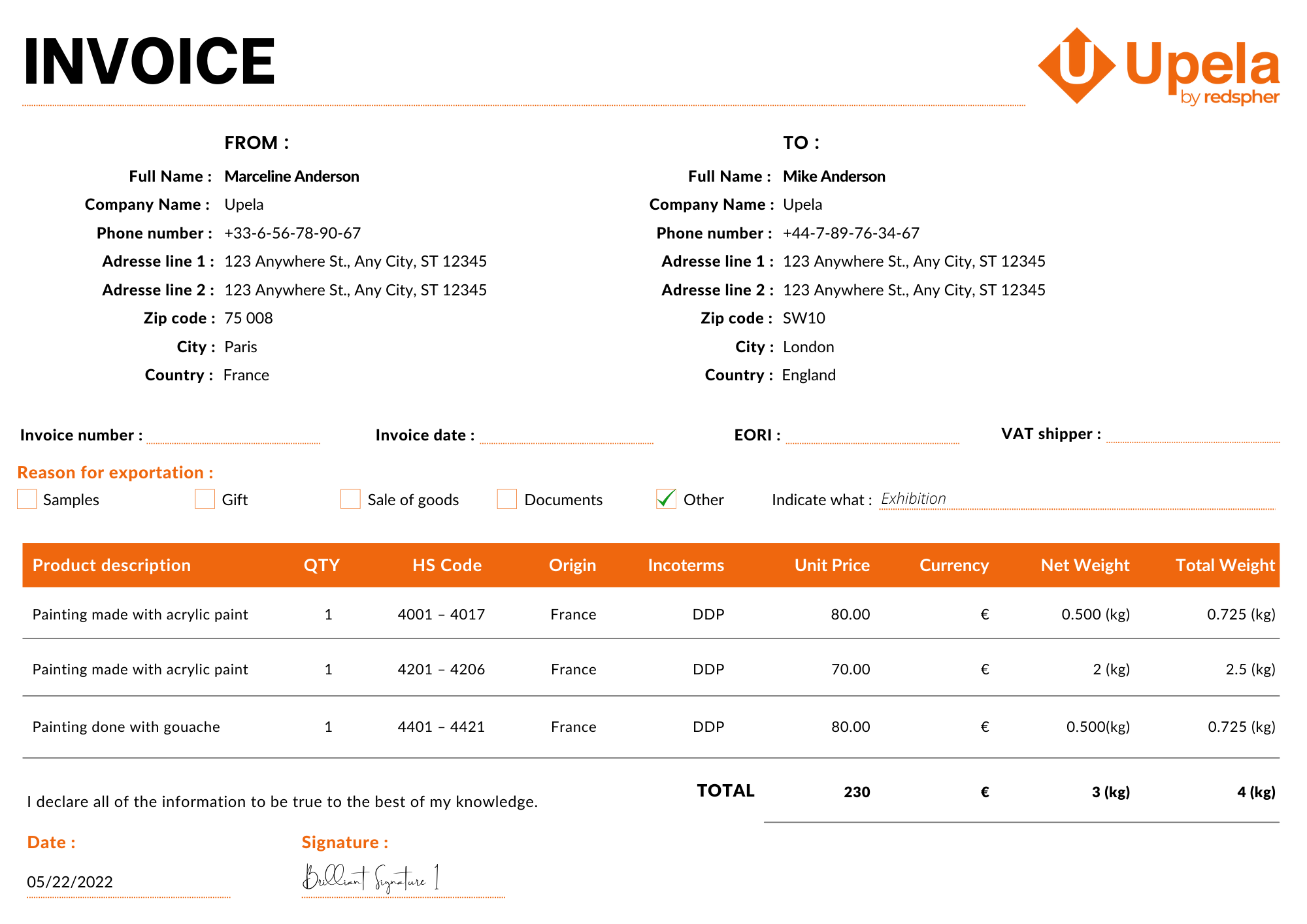What is a commercial invoice?
A commercial invoice is a document which contains information to simplify your customs declaration for international trades, but also to calculate the duties and taxes to be paid when your goods arrive on a territory. The commercial invoice is not the same as the pro forma invoice. A properly completed commercial invoice allows for quick customs clearance of your goods, and therefore, avoids delays in deliveries.
What does a commercial invoice have to contain?
The creation of invoices is one of those tasks that can be a hard task for accountants, managers, and anyone else who has a spreadsheet to keep track of. After all, most businesses have to invoice their customers at some point.
A simple invoice can quickly become a daunting task if you don't have a system for tracking payments, time, rates and other details. Fortunately, you don't have to be an accountant to create a proper commercial invoice.
The commercial invoice must contain the following elements:

- Reason for exportation : some customs authorities require a commercial invoice even for shipments that are not part of a commercial transaction. In this case you can just give the context of this shipment. There are several valid reasons for delivery: a gift, a sale of goods, etc. We invite you to inquire with the customs services of the destination of your shipment to know which export documents are required.
- Invoice date and invoice number: number that will be provided to you when you place a shipping order,
- Incoterms : These are the conditions of delivery of goods, and determine the reciprocal obligations of the seller and the buyer. To learn more about Incoterms, please consult our complete guide.
- A detailed description of the goods being transported: for example, if you are sending a garment, you cannot just indicate "garment" in your description, you must give a precise description such as: "100% organic cotton dress". This will limit the controls to be carried out by the customs authorities. A vague or incomplete description can delay the delivery of your shipment.
- Quantity of goods per parcel : if you are shipping several types of goods in one shipment, you must declare the nature of each good, the quantity, and the detailed description of each item.
- HS Code : the HS (Harmonized System) code is a code that allows customs to define the taxes and customs fees and controls applicable to your shipment. You can find this code at the customs authorities of the country of departure.
- Declared value of goods per parcel : This is the actual value of your shipment, you will also need to specify the currency used for the purchase. If you are shipping something of great value (e.g., artwork or jewelry), you should plan ahead and provide proof of the value of the shipment, because when the value of the shipment is very high, customs may ask the recipient or the sender to justify the value of the goods.
- Insurance fees : you will have to refer to the import/export conditions of your incoterms, or via an insurance that you will have subscribed. If you do not have this information, additional fees may be applied by the customs authorities.
- Country of origin : this is the country of origin of manufacture of the goods and not the country from which the goods were shipped.
- Weight : the weight of the goods without packaging, and the weight of the goods with packaging.
Make sure your invoice is properly presented
Invoices are the commercial equivalent of a sales pitch. If they are not legible, or lack clarity, it will cause extra effort for the customs officer, and therefore slow down the clearance process. Make sure your invoice is well presented and contains all the information the authorities need.
How to attach the commercial invoice to my shipment?
First, make sure you provide three copies of the invoice with your shipment (creating Make sure you include three copies of the invoice with your shipment, one for the recipient and two for the shipment. Protect them properly, for example in a waterproof plastic pouch.
